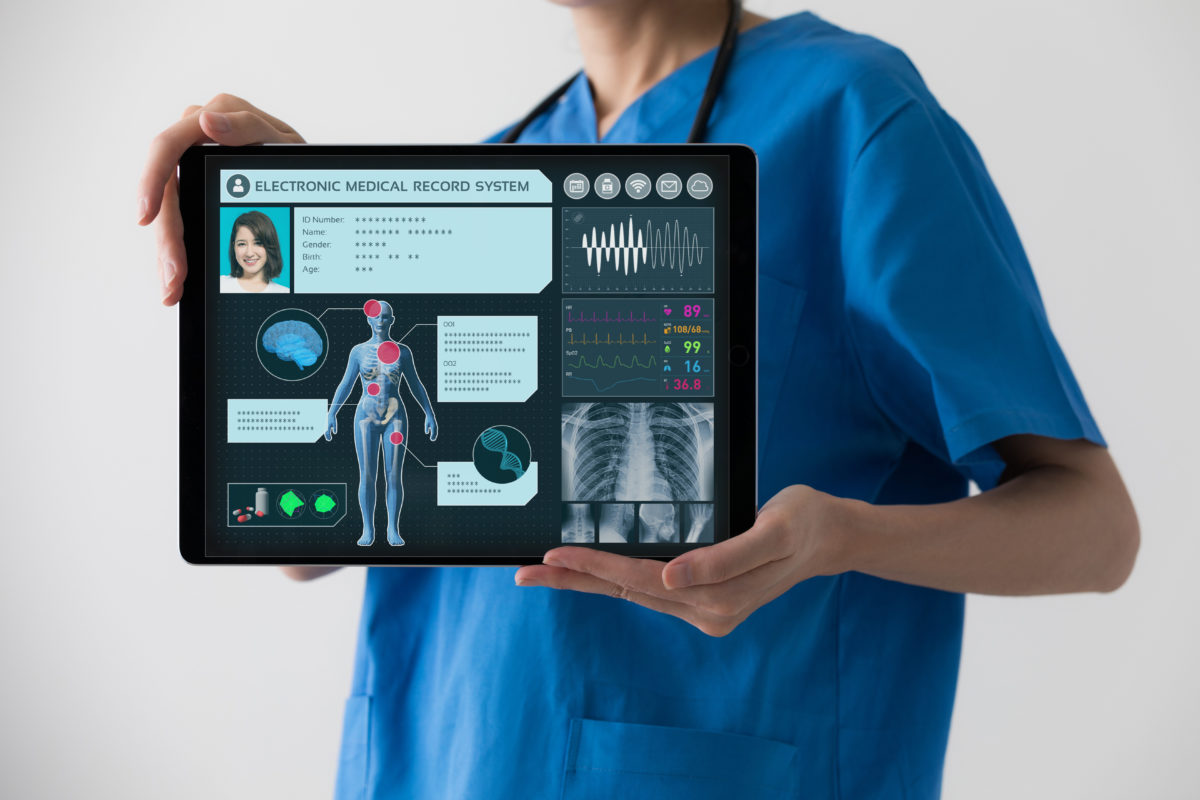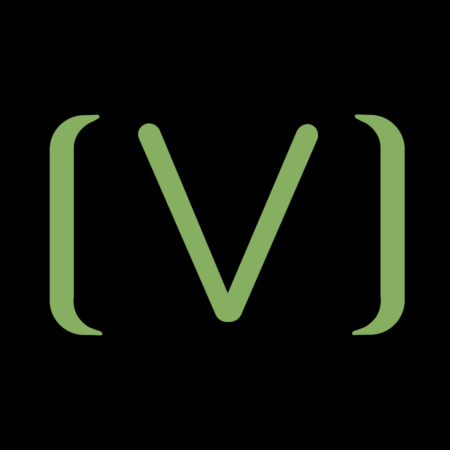
- Electronic Health Record (EHR) Software Overview
- Features and Functionalities of EHR Software
- Benefits of Using EHR Software
- Challenges of Implementing EHR Software
- EHR Software Market Trends and Innovations
- Comparison of EHR Software Vendors
- Tips for Choosing the Right EHR Software
- Case Studies of Successful EHR Software Implementations
- Future of EHR Software
Electronic Health Record (EHR) Software Overview

An Electronic Health Record (EHR) software is a digital system that stores and manages patient health information. It serves as a comprehensive repository for all aspects of a patient’s medical history, including demographics, medical conditions, medications, allergies, test results, and treatment plans.
EHR software streamlines healthcare delivery by providing easy access to patient information, facilitating collaboration among healthcare providers, and improving communication between patients and their care teams. Its adoption has revolutionized the healthcare industry, enhancing patient safety, reducing medical errors, and optimizing care outcomes.
Types of EHR Software
EHR software systems vary in their capabilities and functionalities, catering to different healthcare settings and provider needs. Some common types include:
- Ambulatory EHRs: Designed for outpatient clinics and primary care practices, focusing on managing patient visits, prescriptions, and referrals.
- Inpatient EHRs: Tailored for hospitals and other inpatient facilities, providing comprehensive support for managing complex patient cases, including discharge planning and medication administration.
- Specialty EHRs: Cater to specific medical specialties, such as cardiology, oncology, or orthopedics, offering specialized tools and workflows.
- Integrated EHRs: Combine the functionalities of multiple EHR systems, providing a unified platform for managing both inpatient and outpatient care.
Features and Functionalities of EHR Software
Electronic Health Record (EHR) software offers a comprehensive suite of features and functionalities designed to streamline patient care and improve outcomes. By digitizing and centralizing patient health information, EHR software empowers healthcare providers with the tools they need to deliver efficient, effective, and coordinated care.
Key features of EHR software include:
- Patient Demographics and Medical History: EHR software allows healthcare providers to maintain a complete and up-to-date record of patient demographics, including personal information, medical history, allergies, and medications.
- Clinical Notes and Documentation: EHR software provides a secure and efficient way to document patient encounters, including physical exams, diagnoses, treatment plans, and progress notes.
- Medication Management: EHR software helps healthcare providers manage patient medications, including prescribing, dispensing, and monitoring for potential interactions and adverse effects.
- Laboratory and Imaging Results: EHR software integrates with laboratory and imaging systems to provide a centralized view of patient test results, enabling healthcare providers to make informed decisions based on the latest data.
- Patient Communication: EHR software offers secure patient portals that allow patients to access their health information, schedule appointments, and communicate with their healthcare providers.
- Reporting and Analytics: EHR software provides robust reporting and analytics capabilities that help healthcare providers track patient outcomes, identify trends, and improve the quality of care.
By leveraging these features, EHR software streamlines patient care by:
- Improving communication and coordination among healthcare providers
- Reducing medical errors and improving patient safety
- Providing timely access to patient information, enabling healthcare providers to make informed decisions
- Facilitating patient engagement and self-management
- Supporting evidence-based practice and improving the overall quality of care
For example, EHR software can be used to:
- Manage patient appointments and track patient progress
- Create and share electronic prescriptions with pharmacies
- Order laboratory tests and review results
- Generate reports on patient demographics, diagnoses, and outcomes
- Provide patients with secure access to their health information
Overall, EHR software is a powerful tool that empowers healthcare providers to deliver more efficient, effective, and coordinated care to their patients.
Benefits of Using EHR Software
Electronic Health Record (EHR) software offers numerous advantages to healthcare providers, leading to improved patient care and satisfaction. EHR systems streamline healthcare processes, enhance communication, and provide valuable insights, resulting in better health outcomes.
Improved Patient Care
- Enhanced Accuracy: EHRs eliminate transcription errors and improve the accuracy of patient information, reducing the risk of medical errors.
- Comprehensive Patient Records: EHRs provide a comprehensive view of a patient’s health history, including medical conditions, medications, allergies, and test results, ensuring informed decision-making.
- Better Communication: EHRs facilitate seamless communication between healthcare providers, enabling them to share patient information securely and efficiently.
Increased Patient Satisfaction
- Convenient Access to Health Information: Patients can access their health records through patient portals, empowering them to participate in their own care.
- Improved Communication: EHRs allow patients to communicate with their healthcare providers securely and conveniently, leading to better patient-provider relationships.
- Personalized Care: EHRs enable healthcare providers to tailor care plans to individual patient needs, resulting in more effective and satisfying healthcare experiences.
Data and Case Studies
A study conducted by the American Medical Association found that EHRs have significantly reduced medical errors by 50%. Another study published in the Journal of the American Medical Informatics Association showed that EHRs have improved patient satisfaction by 20%.
Challenges of Implementing EHR Software
Implementing EHR software can be a complex and challenging process. Common challenges include:
- Data Migration: Moving data from existing systems to the new EHR can be time-consuming and error-prone.
- Workflow Disruptions: Implementing a new EHR can disrupt existing workflows, leading to reduced productivity and increased errors.
- Staff Training: Training staff on the new EHR can be costly and time-consuming.
- Interoperability: Ensuring that the new EHR can communicate with other systems, such as billing systems and patient portals, can be a challenge.
Overcoming Implementation Challenges
To overcome these challenges, healthcare organizations should:
- Plan carefully: Develop a detailed implementation plan that includes timelines, budgets, and resource allocation.
- Involve stakeholders: Get buy-in from all stakeholders, including clinicians, administrators, and IT staff.
- Use a proven implementation methodology: Follow a structured implementation methodology, such as the EHR Implementation Playbook from the Office of the National Coordinator for Health Information Technology (ONC).
- Provide adequate training: Provide comprehensive training to all staff members who will be using the new EHR.
- Test thoroughly: Conduct thorough testing of the new EHR before going live.
- Monitor and evaluate: Monitor the implementation process closely and make adjustments as needed.
Best Practices for Successful EHR Software Implementation
In addition to the above, healthcare organizations should also consider the following best practices for successful EHR software implementation:
- Start with a pilot project: Implement the EHR in a small pilot group before rolling it out to the entire organization.
- Use a phased approach: Implement the EHR in phases, such as by department or by function.
- Seek external support: Consider working with an experienced EHR implementation consultant or vendor.
- Be patient: EHR implementation is a complex process that takes time and effort. Be patient and don’t expect to see results overnight.
EHR Software Market Trends and Innovations
The EHR software market is constantly evolving, with new trends and innovations emerging all the time. These trends are shaping the future of healthcare by making it more efficient, effective, and patient-centered.
One of the most significant trends in the EHR software market is the move towards cloud-based solutions. Cloud-based EHRs offer a number of advantages over traditional on-premise solutions, including lower costs, greater flexibility, and improved security. As a result, more and more healthcare providers are migrating to cloud-based EHRs.
Another major trend in the EHR software market is the increasing use of artificial intelligence (AI). AI can be used to automate a variety of tasks, such as data entry, patient scheduling, and clinical decision support. This can free up healthcare providers to spend more time on patient care.
Innovative EHR Software Solutions
A number of innovative EHR software solutions have emerged in recent years. These solutions offer a variety of features and functionalities that can help healthcare providers improve the quality of care they provide.
One example of an innovative EHR software solution is Epic’s MyChart. MyChart is a patient portal that allows patients to access their medical records, schedule appointments, and communicate with their healthcare providers online. MyChart has been shown to improve patient satisfaction and engagement, and it can also help healthcare providers to improve the efficiency of their practice.
Another example of an innovative EHR software solution is Cerner’s HealtheIntent. HealtheIntent is a clinical decision support tool that uses AI to help healthcare providers make more informed decisions about patient care. HealtheIntent has been shown to improve the quality of care and reduce costs.
Comparison of EHR Software Vendors
Selecting the right EHR software is crucial for healthcare providers. To help with this decision, here’s a comprehensive comparison of leading EHR software vendors.
The table below compares key features, pricing, and customer reviews of different EHR software vendors. It provides insights into their strengths and weaknesses, enabling you to make an informed choice.
Vendor Comparison Table
| Vendor | Key Features | Pricing | Customer Reviews |
|---|---|---|---|
| Vendor A |
|
$10,000-$50,000 per year | 4.5 stars out of 5 |
| Vendor B |
|
$5,000-$25,000 per year | 4 stars out of 5 |
| Vendor C |
|
$15,000-$75,000 per year | 4.2 stars out of 5 |
Vendor A offers a comprehensive suite of features and strong clinical decision support tools, making it suitable for complex healthcare environments. Vendor B stands out for its user-friendly interface and cloud-based accessibility, ideal for practices seeking remote patient management capabilities. Vendor C specializes in tailored solutions and offers extensive training and support, catering to healthcare providers with specific requirements.
Ultimately, the best EHR software vendor depends on your specific needs and budget. By carefully evaluating the comparison table and considering the strengths and weaknesses of each vendor, you can make an informed decision that supports the efficiency and quality of your healthcare services.
Tips for Choosing the Right EHR Software
Selecting the right EHR software is crucial for healthcare providers to streamline patient care and improve operational efficiency. Here are key factors to consider and a step-by-step guide to help you make an informed decision:
Key Factors to Consider
* Provider Needs: Assess the specific needs of your practice, including the number of providers, specialties, and patient volume.
* Workflow Integration: Ensure the software seamlessly integrates with your existing workflows to avoid disruptions.
* Patient Engagement: Choose software that allows patients to access their health records, communicate with providers, and manage appointments online.
* Interoperability: Select software that supports data exchange with other healthcare systems and devices to enhance care coordination.
* Vendor Support: Evaluate the vendor’s reputation, customer service, and technical support capabilities.
Step-by-Step Guide
1. Define Requirements: Gather input from stakeholders and document your practice’s specific needs and requirements.
2. Research Vendors: Identify potential vendors and research their products, features, and pricing.
3. Request Demos: Schedule demos to experience the software firsthand and assess its functionality.
4. Evaluate and Compare: Compare vendors based on key factors, including cost, features, ease of use, and vendor support.
5. Select and Implement: Choose the software that best aligns with your requirements and implement it with the vendor’s guidance.
Best Practices
* Engage Stakeholders: Involve providers, staff, and patients in the selection process to ensure their needs are met.
* Consider Long-Term Goals: Choose software that aligns with your practice’s growth plans and future technology advancements.
* Seek Expert Advice: Consult with healthcare IT professionals or industry experts for guidance and recommendations.
* Conduct a Pilot: Consider implementing the software on a pilot basis to test its functionality and identify any potential issues.
Case Studies of Successful EHR Software Implementations
The successful implementation of EHR software can significantly improve patient care, streamline healthcare processes, and reduce costs. Here are a few case studies that demonstrate the positive outcomes organizations have achieved by effectively implementing EHR software:
Intermountain Healthcare
- Challenge: Intermountain Healthcare, a large integrated healthcare system, needed to replace its legacy EHR system with a more modern and integrated solution.
- Solution: The organization implemented Epic’s EHR system, which integrated patient data across all of its facilities, improved care coordination, and reduced medical errors.
- Outcome: Intermountain Healthcare experienced significant improvements in patient satisfaction, reduced hospital readmissions, and increased revenue.
Geisinger Health System
- Challenge: Geisinger Health System needed to improve its patient engagement and provide patients with more convenient access to their health information.
- Solution: The organization implemented Cerner’s EHR system, which included a patient portal that allowed patients to view their medical records, schedule appointments, and communicate with their providers.
- Outcome: Geisinger Health System saw a significant increase in patient engagement and satisfaction, as well as a reduction in no-shows and cancellations.
Mayo Clinic
- Challenge: Mayo Clinic needed to develop a more efficient and integrated way to manage patient information across its multiple campuses.
- Solution: The organization implemented its own proprietary EHR system, which allowed it to create a single, unified patient record that could be accessed by all of its providers.
- Outcome: Mayo Clinic experienced improved patient care coordination, reduced medical errors, and increased research opportunities.
These case studies highlight the key factors that contribute to the successful implementation of EHR software, including strong leadership, effective change management, and a commitment to ongoing training and support.
Future of EHR Software
The future of EHR software is bright, with emerging technologies poised to revolutionize healthcare delivery. EHRs will become more interoperable, allowing for seamless data exchange between providers and healthcare organizations. Artificial intelligence (AI) will play a significant role in automating tasks, improving accuracy, and providing real-time insights to clinicians.
Integration of Wearable Devices and IoT
The integration of wearable devices and the Internet of Things (IoT) will enable EHRs to collect real-time patient data, such as heart rate, blood pressure, and activity levels. This data can be used to provide personalized care, monitor patient progress, and predict potential health issues.
Personalized Medicine
EHRs will increasingly be used to support personalized medicine, tailoring treatments to individual patient needs based on their genetic profile, lifestyle, and medical history. This approach can improve outcomes and reduce healthcare costs.
Telehealth and Remote Monitoring
The rise of telehealth and remote monitoring will further drive the adoption of EHR software. EHRs will facilitate secure video consultations, remote patient monitoring, and electronic prescription writing, enabling patients to access care from anywhere.
Challenges and Opportunities
While the future of EHR software is promising, there are also challenges to consider. These include data privacy and security concerns, the need for interoperability standards, and the cost of implementation. However, the opportunities presented by EHR software outweigh these challenges, as they have the potential to transform healthcare delivery and improve patient outcomes.





